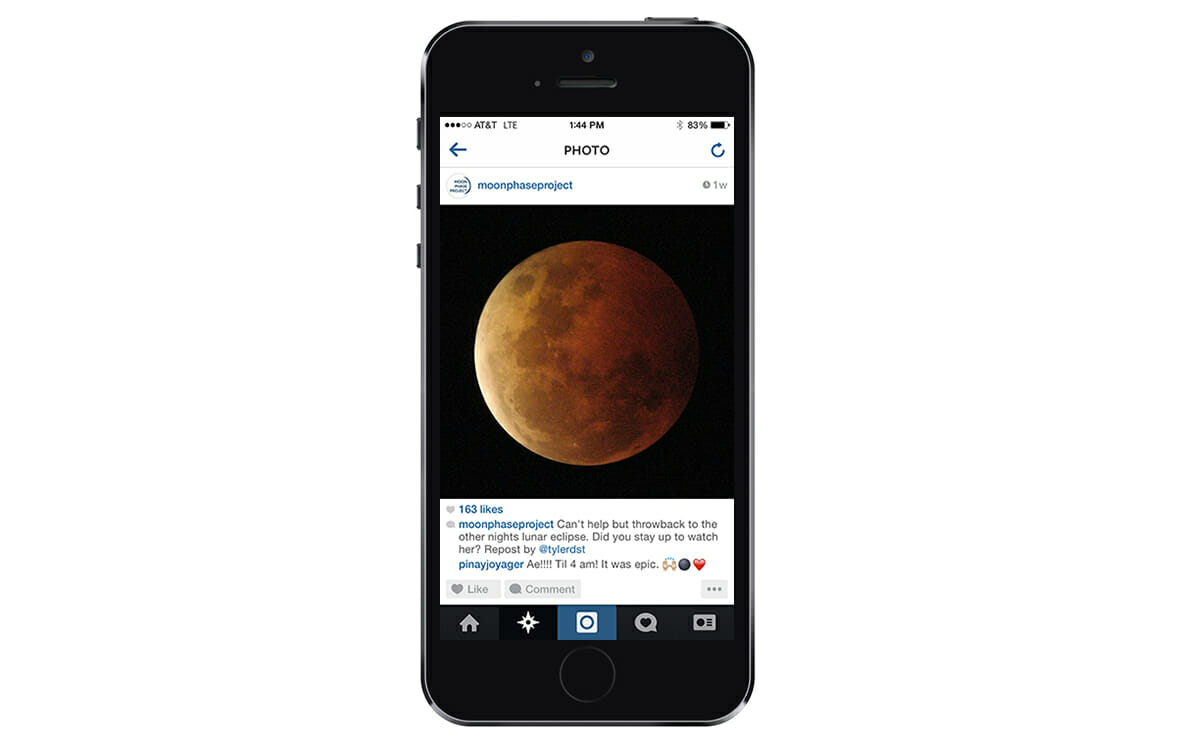A group of Hawaiian conservationists are using Instagram to tie observations of the natural world to the traditional lunar calendar

Like many agrarian cultures, pre-contact Hawaiians used a lunar calendar to manage farming and fishing. Beginning with Hilo, the crescent moon, and peaking with MÄhealani, the full moon, the Hawaiian calendar was made up of 30 distinct moon phases. Based on observations passed down through generations, certain phases were thought to correspond to better fishing or planting, depending on the season and where one lived.
Today, that shared knowledge has largely faded, but one group of contemporary Hawaiian conservationists is looking to rebuild the oral tradition of how lunar cycles affect the environment by using a decidedly modern form of the diary: an Instagram account. The Moon Phase Project, as conceived by founders Kanani Frazier and Brenda Asuncion, encourages a team of island-based photographers to post observations of the natural world tagged with the corresponding Hawaiian moon phase to a shared account.
“We’re just looking to see what’s going to happen,” says Frazier, who has a degree in biology from the University of Hawaii and currently lives in Puna, on the island of Hawaii. “We’re not experts of our areas yet, but we’d love to be.” Frazier and Asuncion met while working for the National Oceanic and Atmospheric Association on a project to create a tide and moon calendar for Hanalei, a town on the north shore of Kauai. The Hanalei calendar incorporated aspects of the Hawaiian calendar, including names of the moon phases and information on how to sustainably harvest fish in accordance with seasonal spawning cycles, but because of the specificity of the tides, it was intended only for residents of Hanalei. “[The Hawaiian lunar calendar] is a good generalization and something to keep in mind,” says Frazier. But during something like the full moon, which is considered a good overall day for planting, the tides are high. “Depending on where you live, maybe it’s not a good day to plant things because the soil is salty. You have to think of it in a holistic way based on where you live.”
Lono || maiÊ»a beginning to fruit in OlaÊ»a, Puna on this Lono moon. #hiloiaapaa #anahuluhoemi #ikiiki A photo posted by hilo ‘ia a pa’a (@moonphaseproject) on
And that’s where the Moon Phase Project comes in. The goal, by having the geographically diverse team of bloggers tag their photos to a particular moon phase, is to promote an awareness of the natural world and begin to rebuild that place-based knowledge. “A lot of people ask me, ‘can you tell me when to plant kalo [taro],” says Frazier. “And my answer is, ‘Well, where do you live? Is it rainy? You tell me when you can plant kalo. The only way you can know about it is to do it.’”
The Instagram aspect is a key part of the project for Frazier, who admits she doesn’t write things down as often as she would like. “Sometimes I’ll see something blooming and take a picture with my phone,” she says. “Even if I don’t post it, it has the date, the time, the month, and then I can go back and say ‘oh, that was that moon.’”
The collaborative nature of the project also benefits from being broadcast on a sortable wordpress site, as team members can learn from each other in real time. Co-founder Brenda Asuncion’s personal project, for example, is to see if she can eventually match the ocean tides to the moon phase (and vice versa) without looking at a calendar. When Frazier, who lives on a different island, sees Asuncion’s tidal posts, she says it’s a good reminder to pay attention.
One year in and the project is gathering momentum. The volunteer team, made up of people Frazier and Asuncion knew from the conservation world, has grown from ten members to 17. Goals for the future include outreach to local schools and increasing the number of people they have reporting. “We have one person, for example, right now on Kauai,” says Frazier, “but we’d love to have ten, with eyes everywhere, looking and sharing.”
Photo illustration by Rebecca Katzman.